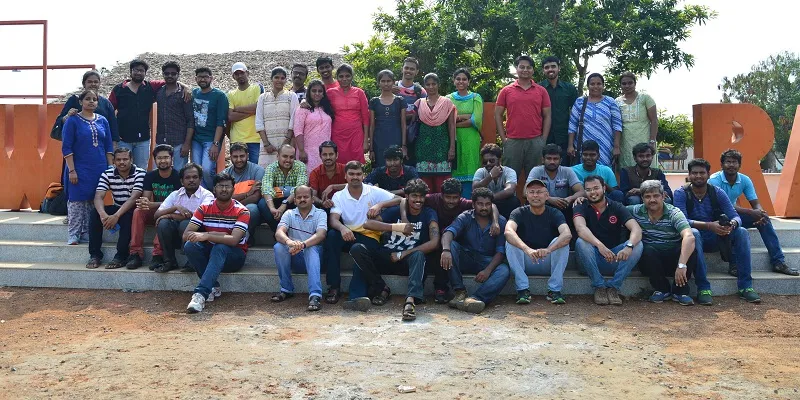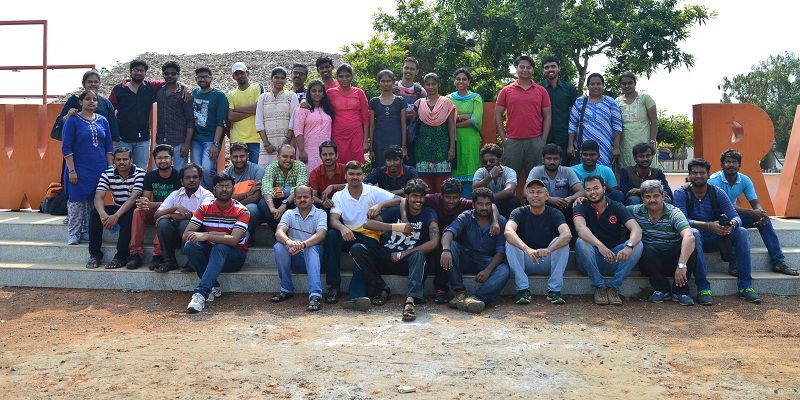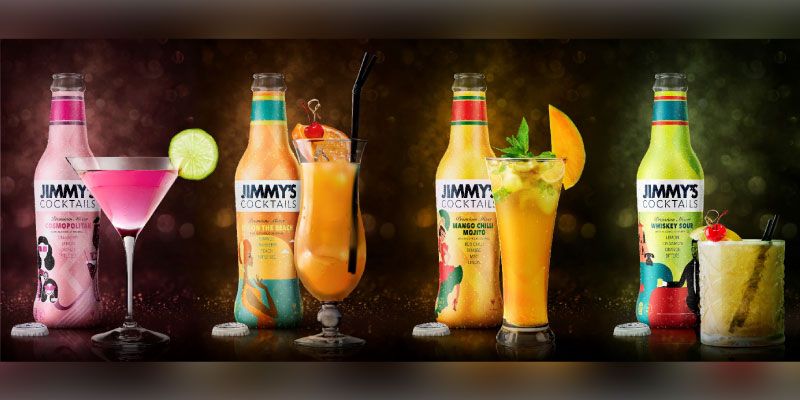Karomi's tech tracks labelling artwork, saves FMCG industry millions in write-offs
Tracking label artwork and design is a $10-billion business in India.
Vilva Natarajan has an unusual job. He spends 18 hours a day tracking artwork for companies. Artwork is the most crucial part of branding for any business. In a multi-step process involving several hands, Vilva’s company Karomi cuts the confusion with a single dashboard where everyone knows what is happening with artwork or labelling.
At the level of FMCG founders too, there is as much focus on a brand's design as taking it to the market. Companies like Fit & Glow, MCaffeine, Ava, Mojo, among other, lay a great deal of emphasis on the labelling, which directly connects with the consumer.

“Label artwork is crucial for brand communication. We have processes to get the design right for the product. It is the most underestimated operations cost that can burn money if not tracked properly,” says Manish Chowdhary, Co-founder of Fit & Glow.
Ava's founder Prithika Parthasarthy, too, is constantly looking at the artwork for imperfections. “The labelling defines my brands and it should be absolutely perfect to track changes in price, colour, communication and even the design,” she says.
Fit & Glow and Ava, for instance, are upcoming FMCG companies where processes can be managed under the entrepreneur’s keen eye. But in the case of large companies such as HUL or Britannia, it is not possible to track the number of designs that have gone into print. Besides, they also have difficulty in controlling write-offs due to mismatched expectations on the artwork, between the design, sales, marketing and production departments.
The pain points for large companies do not end there. Quite often, what is designed and what is printed ends up being very different. Most of the time the problems are with the printing machines used by vendors, which do not recognise certain high definition designs and colours. A deep orange, for example, may end up looking like a red.
Until now, there was no way to track these errors. It required human intervention at every level to notice the mistakes on a label, the colours, text and design.
Finding the business
“In our 15-year journey as a technology company that managed compliance, we realised that labelling was the biggest pain point for all the clients in the industry,” says 47-year-old Vilva, Founder of Chennai-based Karomi Technology.
Karomi’s platform tracks the lifecycle of artwork from the design to the printing to the packaging stage, and enables consumer goods companies to get their campaign collateral and product to the market on time. It could be extremely costly if the artwork is not tracked. Here is why.
The FMCG industry spends at least 10 percent of its product cost on packaging and labelling, which estimates the artwork and labelling industry to be a whopping $10 billion in the country. This industry is largely fragmented and does not have technology to make sense of artwork. Say, a designer creates a label of a skincare brand on a high-end Apple machine and releases it to the specifications of the manufacturing team. The marketing team mails these designs or sends the files to the preferred vendor.
There was manual intervention here because a person had to verify the colour count. Here the verification procedure is manual as the design is resent to the marketing team via a file. Everything looks normal until the label is printed in the manufacturing line. Then the marketing team and the packaging team are at loggerheads.
The entire line is broken and the design and printing teams have to find the template that was used. “It’s a whole mess. Imagine, if Braille was imprinted on the labels and then, thanks to the colours the label is rejected, the company pays to reprint the Braille again,” says Vilva, adding that his company’s tool enables the entire ecosystem to be on one platform.
No wonder there are just a handful of companies doing this globally. Perigord, Eskographics and Blue Software have realised the potential of the business.
In the beginning
It took Karomi a good 11 years to figure out its sweet spot in business and this happened by chance with a Bengaluru-based pharma and FMCG company in 2011. “We were automating business processes at the time for retail and pharma companies and a client came to us with the problem,” says Vilva. The client was seeing large write-offs, at least Rs 50 lakh to Rs 1 crore, per year, for labelling, and these rejected artwork would be sitting in their warehouses. Karomi built a cloud-based platform in a few months that could track all the artwork, from first prototype that went to the vendors and to the end of the manufacturing line. The cost saving was direct because the products campaign launch would not be delayed.
They also combined their compliance bit on artwork; for example, the pharma artwork needs to be compliant with FDA regulations by carrying legal and usage information on the labels.
Vilva is a believer in building in India and came from the US back in 2001, after a decade-long stint there, to start Karomi, which was an IT services and compliance management software company. He is happy to have pivoted from a commoditised IT business to a value add.
In the period from 2011 to 2015 the revenues grew from Rs 2 crore to Rs 3.5 crore by 2016. “It tooks us four years to perfect and crack a platform that can in real time track all the artwork during a campaign,” says Vilva.
The hard work by Karomi’s 40-member team led to securing an investment from Idea Spring Capital last October. They raised $500,000 from the VC firm. “Karomi’s technology is unique and has the potential to scale globally. With this infusion the team is going to find partnerships with corporates in Europe and the US,” says Naganand Doraswamy, Founder of Idea Spring Capital, adding that the platform is easy to scale for any corporate and brings direct cost savings in to the business by avoiding mistakes on label artwork.
The company hopes to double its revenues in 2017. For Vilva it is the scope of the work that is important. The quiet man carries the veneer of an old school entrepreneur who is technically very strong and is not a savvy-marketer. He constantly wants to update himself with technology only and being technically strong out beats all forms of marketing. He is an inspiration to his employees and in a town like Chennai, where personal relationships are more important than salary hikes, some of the employees have been with him since 2000. The man has also run 28 marathons, the solitude of running perhaps leading him to figuring out a business opportunity that is disruptive.











